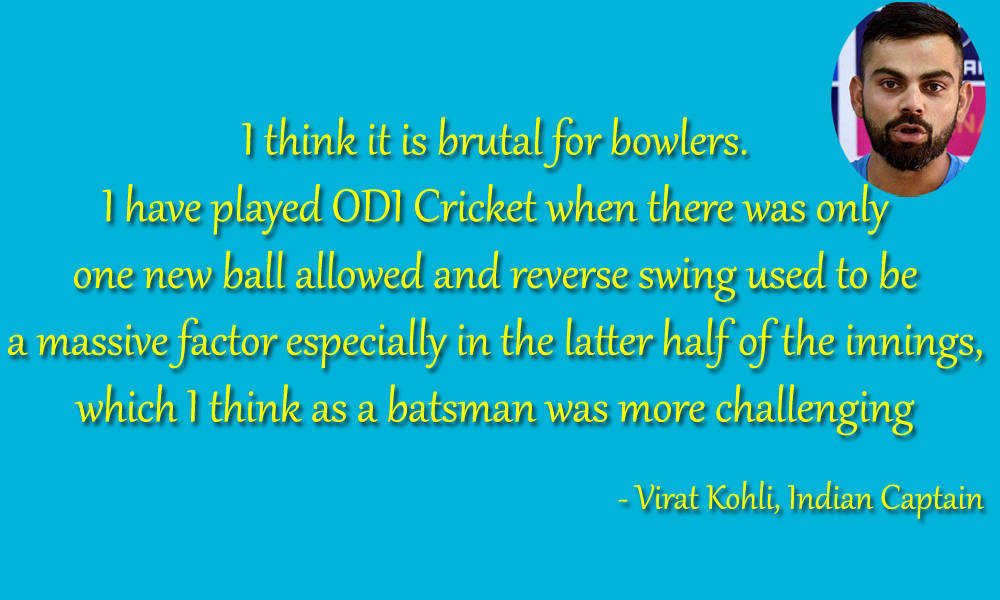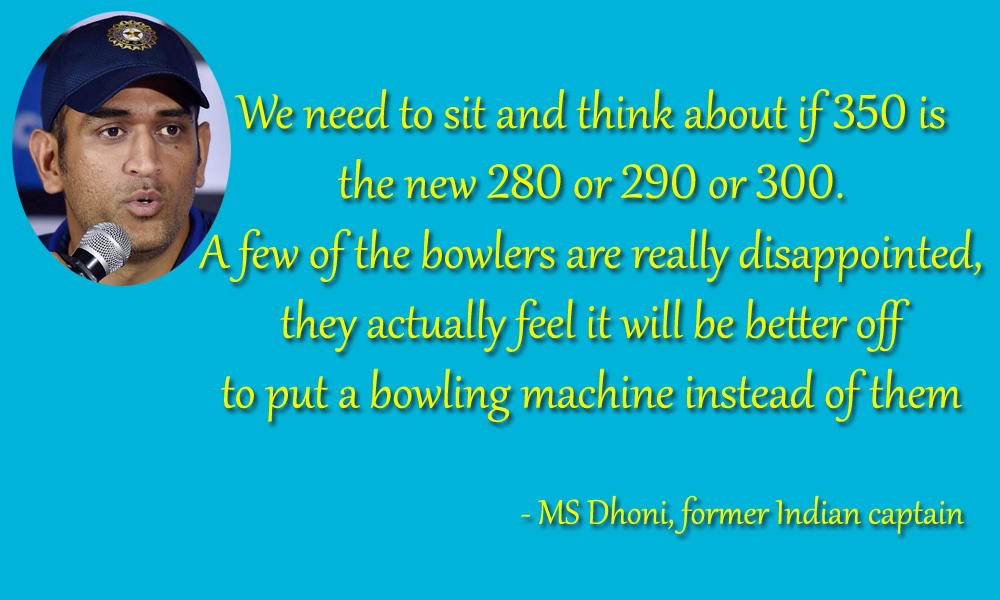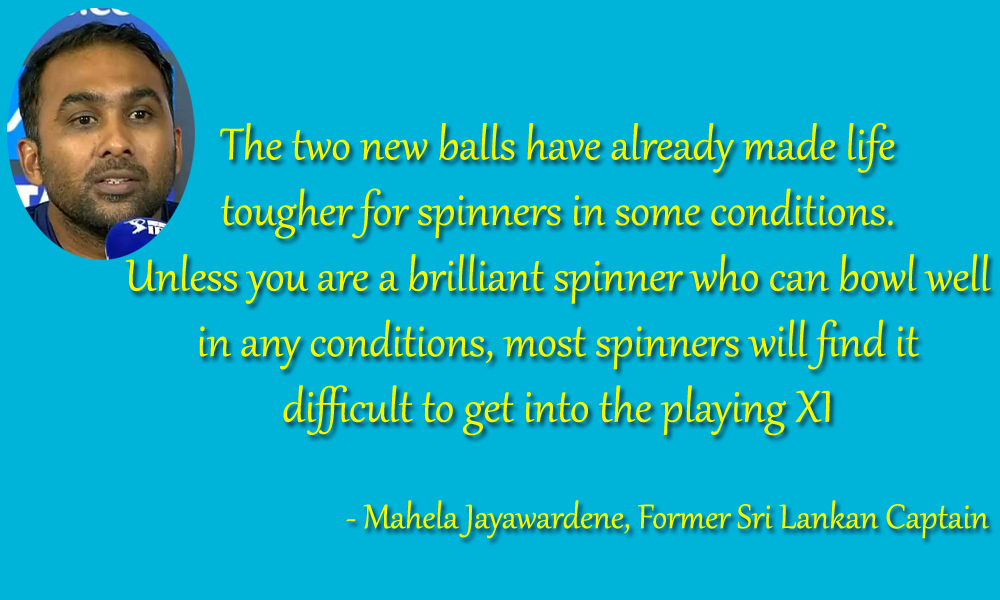TRENDING TAGS :
Why did Sachin Tendulkar term two new balls rule in ODIs a disaster?
Sachin Tendulkar-Backed Azad Engineering IPO: Allotment, GMP, and Listing Date Revealed
 Shubhanshu Sharma
Shubhanshu Sharma
Lucknow: Cricket is evolving and it must keep moving forward for a better future. But it seems like the Cricket administrators are consistently ignoring one aspect of the game – Bowling – which is equally essential for the rise of the sport.
The introduction of T20 has already proved detrimental for the bowlers and the imposition of the law has only added to the woes of the bowlers.
Same question was raised by none other than Indian legend Sachin Tendulkar who believes the two new balls in an ODI inning is a perfect recipe of disaster. He said this only after England made a mockery of a chase of 311 runs by achieving it with 32 balls remaining.
Also Read: Sri Lanka captain, Coach, Manager admit to serious ICC Code violation
Surprisingly, England is a country which had the toughest conditions in the world for scoring quick runs because of the seam, bounce and swing fast bowlers used to get there. But in the ongoing ODI series against Australia, England has achieved scores of 342/8 (Cardiff), 481/6 (Nottingham) and 314/4 in 44.4 overs (Chester-le-Street) quite comprehensively which is a big shock to the Cricket lovers across the globe.
The 'God of Cricket', on Thursday, took to Twitter endorsing the importance of 'reverse swing' during the slog overs.
https://twitter.com/sachin_rt/status/1009889444663472128
The 'Master Blaster' soon got a supporter in Waqar Younis, a master of reverse swing of his age, who also rued lack of attacking fast bowlers in the world.
https://twitter.com/waqyounis99/status/1009912406431002624
New Zealander paceman Mitchell McClenaghan, who plays in almost all T20 leagues around the world, also backed Tendulkar's appeal of rethinking the two new balls rule in ODIs.
Also Read: ICC appoints Michael Beloff QC to hear Chandimal’s appeal
https://twitter.com/Mitch_Savage/status/1010039033777479685
Mike Atherton and England Test bowler Stuart Broad also endorsed Sachin's appeal.
https://twitter.com/StuartBroad8/status/1010079948491689984
Why was the two new balls rule introduced in ODIs?
- The phase of 15 to 40 overs in ODIs was considered as boring, because both the sides preferred building the inning during the period before finally firing in the last 10 overs.
- Before 2007, the ODI Cricket was facing a recurring problem of ball getting discoloured and having to be changed as the inning progressed.
- To solve the problem, the ICC first introduced a mandatory ball change after 34 overs in 2010.
- The two new-balls rule was also expected to benefit the fast bowlers in seaming conditions.
Also Read: This Pakistani cricketer to be banned for 3 months after failing dope test
Why is the two new-balls rule harmful for bowling?
- The two new-balls rule has been around for around seven years now.
- The rule was first introduced in ODI Cricket back in October 2011.
- As per the rule, a new ball is used from both ends, which means one ball lasts for only 25 overs in an innings.
- It never allows the ball to get old and get the reverse swing.
- It has also troubled the spinners who like to bowl with an older ball.
- It is also easy to send a new ball out of the park easily, which it requires more power and timing to get six runs off an old ball.
The other aspects of the game which changed after the two new balls rule came into effect:
- The ODI run rates have increased marginally from 5.16 between 2007 to 2011 and 5.28 since 2011.
- As far as England ODI Cricket is concerned, their scoring rate has reached to 6.3 runs per over since World Cup 2015 from 5.2 in the previous five years.
- England is also the same place where visiting teams have scored at an average scoring rate of 6.03, which is the fasted across the globe during past three years.
Also Read: KL Rahul opens up about relationship rumours with Nidhhi Agerwal
The other biggest change came in the game since the introduction of two new balls rule is the number of 300+ scores.
- Since October 2011, out of a total of 1,606 innings, teams have crossed 300-run mark 257 times which is 6.2 innings per 300.
- Before October 2011, out of a total of 6,333 innings, teams had touched the 300-run figure 393 times which is 16.1 innings per 300.
Cricketers from around the world have been opposing the rule as it has made Cricket a more batsmen-oriented sport.

Indian skipper Virat Kohli, during India's pre-departure press conference ahead of their tour to England and Ireland, has also said, "I think it is brutal for bowlers. I have played ODI Cricket when there was only one new ball allowed and reverse swing used to be a massive factor especially in the latter half of the innings, which I think as a batsman was more challenging."
Not only Virat Kohli, but former Indian skipper MS Dhoni had also put the plight of fast bowlers at display by opposing the two new balls rule.

"We need to sit and think about if 350 is the new 280 or 290 or 300. A few of the bowlers are really disappointed, they actually feel it will be better off to put a bowling machine instead of them," Dhoni had asserted during a high-scoring home series against Australia in 2013.

Former Sri Lankan great Mahela Jayawardene had also criticised the rule saying, "The two new balls have already made life tougher for spinners in some conditions. Unless you are a brilliant spinner who can bowl well in any conditions, most spinners will find it difficult to get into the playing XI."
This drastic change in the scoring rate should surely be considered by the ICC lawmakers as Cricket is loved not only because of batting but bowling has equal amount of contribution in the cause.
With the greatest of the game not endorsing the two new balls rule, there is obviously something really wrong. If these types of rules continue to be in the sport, it will surely stop producing specialist bowlers and we will never be able to watch fierce bowling spells like the greatest bowlers of the game used to bowl.
Stats credit: espncricinfo



